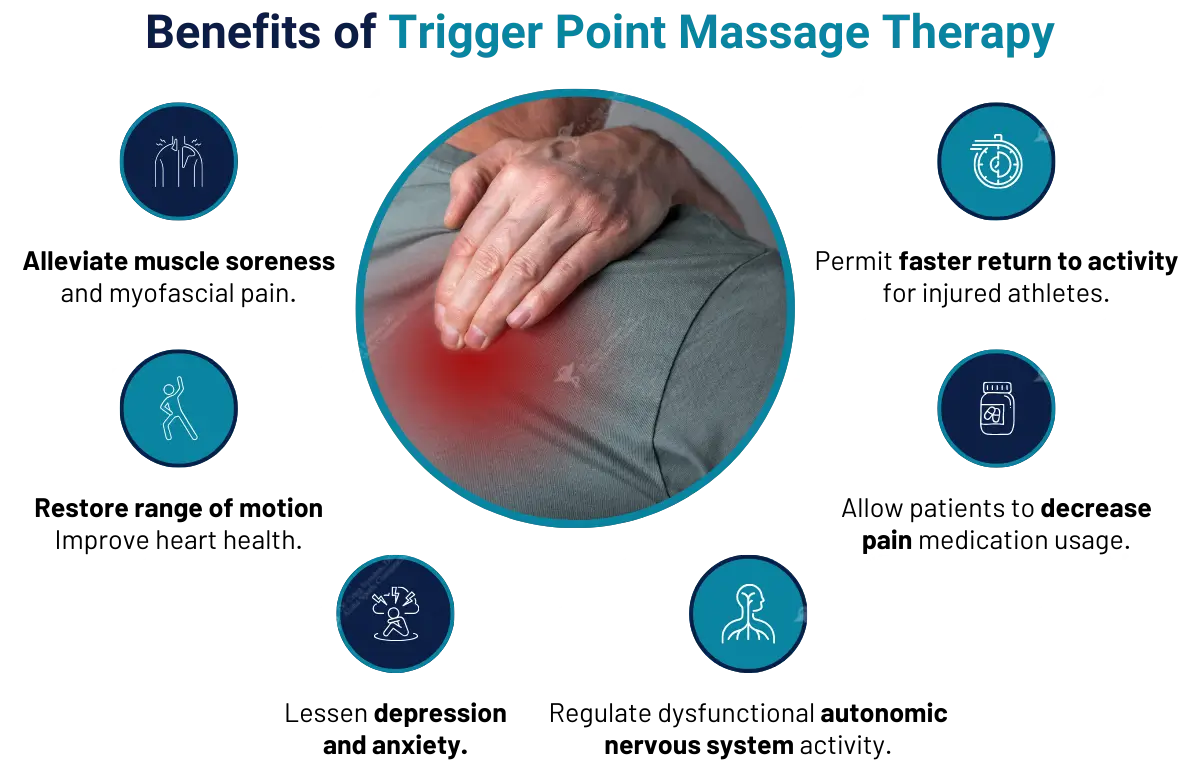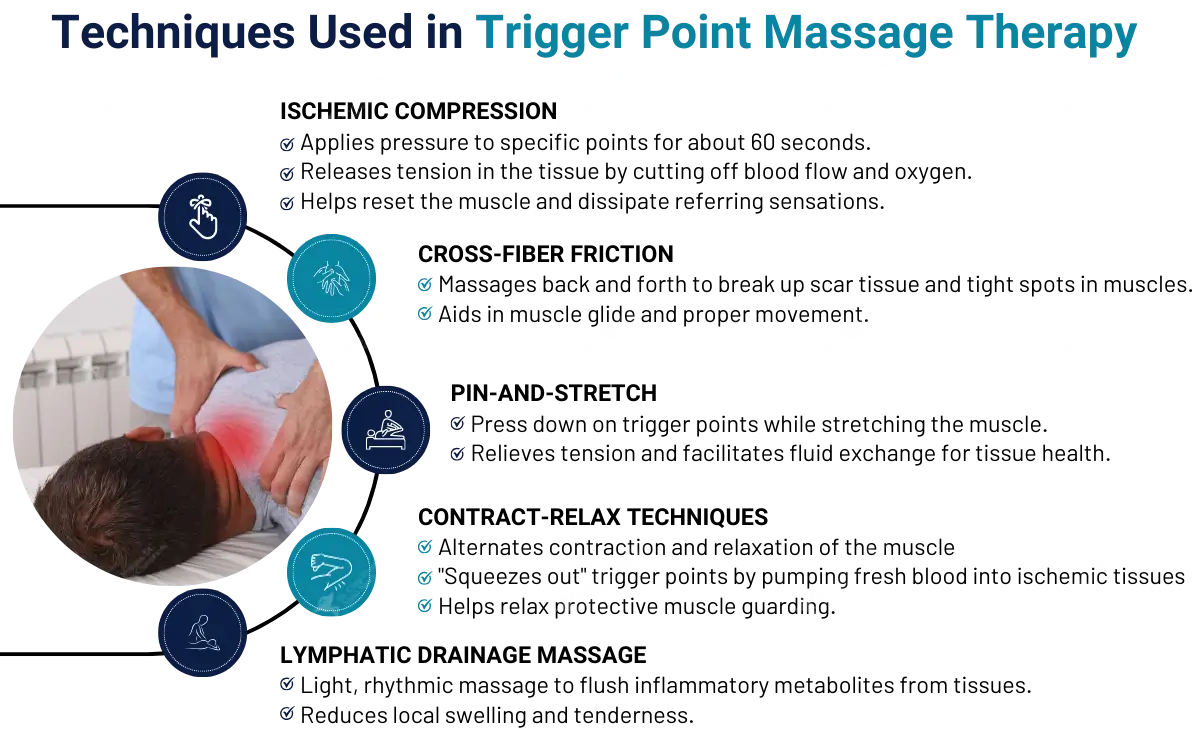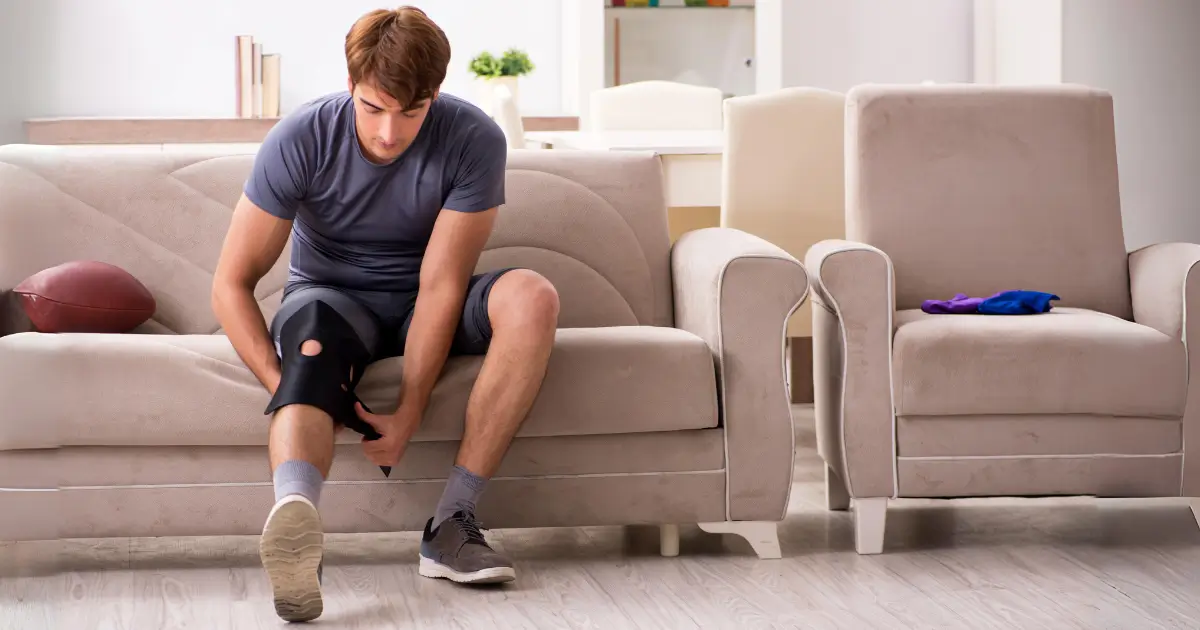
Have you ever felt a knot in your muscle that seems to hurt no matter what you do? These trigger points (TPs) knots can induce muscular discomfort.
As a trigger point massage therapist with 10+ years of experience, I have seen how trigger points can impact someone’s daily life.
In this blog, I explain trigger points, why they develop, and how to treat them effectively. You’ll learn the science of how trigger points cause myofascial pain patterns.
I’ll share my specific massage methods to pinpoint and release restrictive muscle knots. You’ll also discover self-care tips involving stretching, foam rolling, lifestyle updates and more.
What are Triggering Points, and Why Do They Form?
Trigger points (TPs) are hyperirritable spots within a muscle that elicit pain upon compression. Muscle knots form when muscles contract abnormally and do not receive enough oxygen. Poor posture, inadequate nutrients, or chronic stress can cause this.
It causes reflex spasms and nerve sensitivity, like an electrical short circuit within trigger points.
Trigger points can cause pain in specific areas or make pain spread to other places. For example, a trigger point in your quadriceps muscle can hurt your knee. They limit movement and affect muscle function, leading to compensations and imbalances in muscles. Chronic TP activity can cause problems like fibromyalgia, tension headaches, and thoracic outlet syndrome.
In 1942, Dr. Janet Travell and Dr. David Simons found trigger points, which helped us learn more about myofascial pain. We now know that the integrated neuromuscular and fascial systems are pivotal. Treating irritation at trigger points can help resolve systemic pain and dysfunction.
The Physiology of Trigger Points and Myofascial Pain
- Excessive demand leads to micro-trauma of muscle fibers and decreased tissue oxygenation. As a result waste accumulates.
- Local ischemia and inflammation trigger a defensive spasm to protect the muscle. So, nerves become hypersensitive.
- The muscle knot hardens, and trigger points emerge. These release noxious biochemicals that further stimulate nerve fibers.
Benefits of Trigger Point Massage Therapy
- Alleviate muscle soreness and myofascial pain
- Restore range of motion Improve heart health
- Lessen depression and anxiety
- Regulate dysfunctional autonomic nervous system activity
- Allow patients to decrease pain medication usage
- Permit faster return to activity for injured athletes

Techniques Used in Trigger Point Massage Therapy
Many methods exist for deactivating trigger points and removing myofascial pain patterns. I blend techniques to address each unique situation. Standard TPMT protocols I employ include:
1. Ischemic Compression
This technique applies pressure to specific points for about 60 seconds to release tension in the tissue. Pressing on a knot with your finger or a tool cuts off blood flow and oxygen, helping to reset the muscle. Patients will often feel referring sensations dissipate.
2. Cross-Fiber Friction
The therapist massages back and forth to break up scar tissue and tight spots in muscles. It can help muscles glide and move properly.
3. Pin-and-Stretch
Press down on the trigger point while stretching the muscle to relieve tension and pain. It facilitates fluid exchange to optimize tissue health.
4. Contract-Relax Techniques
Alternating contraction and relaxation of the muscle helps “squeeze out” trigger points by pumping fresh blood into ischemic tissues. It also aids in the relaxation of protective muscle guarding.
5. Lymphatic Drainage Massage
Light, rhythmic lymphatic massage helps flush inflammatory metabolites from tissues. It reduces local swelling and tenderness.
During TPMT sessions, therapists can also use other methods to help relax tight muscles and improve movement. These methods include myofascial release, muscle energy technique, dry needling, and instrument-assisted soft tissue movement. These metrics contribute to the overall success of TPMT sessions. They focus on specific stress regions and foster improved muscular function.
Related, Top Reasons to Consider Trigger Point Massage Therapy

Best Practices for Trigger Point Massage Therapy
TPMT requires precision and sensitivity and is tailored for each patient. While trigger points frequently develop in predictable areas, locations vary based on age, injury history, occupational strain patterns, training habits, and anatomical structure.
I conduct thorough postural analysis and functional movement assessments on new patients to identify at-risk tissues. It informs my session approach regarding positioning, depth, and technique selection.
Here are some applications of TPMT for common problem areas:
1. Shoulders
Techniques like pressing on specific muscles and rubbing others can help with shoulder pain, stiffness, headaches, and elbow and wrist pain.
2. Lower Back
Stretching these muscles can help you move better, reduce back pain, and take pressure off your nerves. It relieves sciatic and spinal stenosis symptoms.
3. Hamstrings/Quadriceps
According to NCBI, specific techniques like contract relaxation, MET, and dynamic stretches can improve lower body movement and function. This better aligns the kinetic chain to resolve compensation patterns from old knee injuries or degenerative joint changes.
I customize messages for each person, using various tools and adjusting pressure and time to ensure comfort. While mild muscle soreness can occur after treatment, actual pain should never result from proper TPMT application.
Contraindications and Precautions for Trigger Point Massage
- Anticoagulant medication usage puts patients at a higher bleeding/bruising risk
- Advanced osteoporosis
- Cancer and metastases
- Congestive heart failure
- Kidney disease or organ transplant history
- Certain infections and site-specific inflammatory conditions
- Pregnancy in first & third trimesters due to hormone-related ligament laxity
Self-Care Techniques for Myofascial Pain
While professional hands-on treatment works best for deactivating trigger points, patients play an active role between appointments. Self-massage enhances outcomes and may prevent the formation of new triggers. Helpful self-care strategies include:
1. Targeted Stretching
Maintaining flexibility in muscles vulnerable to trigger points reduces mechanical strain. Those with desk jobs should perform chin tucks, upper trapezius stretches, and doorway chest stretches to keep the neck/shoulders mobile. Back squats, cat/cow pose, and figure 4 stretches help lengthen tight hips and back lines.
2. Foam Rolling/Self-Massage Tools
Applying pressure to tender points with a tennis ball, massage stick, or foam roller keeps tissues supple. Sustained pressure for 30-90 seconds works best. Those with balance issues should attempt this seated or supported.
3. Postural Modification
Improving posture can reduce strain on the body. To prevent back pain, sit up straight, lift objects correctly, use back support when sitting, and wear custom orthotics.
4. Nutrient Repletion
Eating a balanced diet and taking supplements helps muscles get the nutrients they need to work well and heal properly.
5. Stress Reduction
Relaxation training through diaphragmatic breathing, meditation, or yoga helps downregulate the sympathetic stress response, causing protective muscle tension and shortening. It relieves perpetuating factors.
Consistency remains critical with self-care activities for overcoming chronic musculoskeletal problems like myofascial pain. Patients can benefit long-term from trigger point massage by combining professional therapy with at-home efforts.
Do Tight, Tender Muscles Leave You Fatigued No Matter What You Try?
Get lasting relief with our customized trigger point therapy from our clinic.
Get AppointmentThe Final Words
Trigger-point therapeutic massage was a great option for alleviating muscular aches and discomforts. I hope this guide brought greater understanding regarding the scientific foundation and clinical application of trigger point massage therapy. When done right by a skilled clinician, TPMT is a safe way to relieve acute and chronic neuromuscular pain quickly.
Research continues advancing our approach toward assessment and correction of dysfunctional motor patterns. However, hands-on skills remain essential for identifying and deactivating the trigger points driving systemic pain and compensation. Patients must also make lifestyle changes to prevent perpetuating factors.

Meet Dr. Craig Eymann, a dedicated chiropractor and yoga enthusiast with over two decades of expertise in spinal health, sports chiropractic, and personalized care, prioritizing misalignment correction for swift injury resolution.
Categories
Tags
Recent Blogs




Leave A Comment